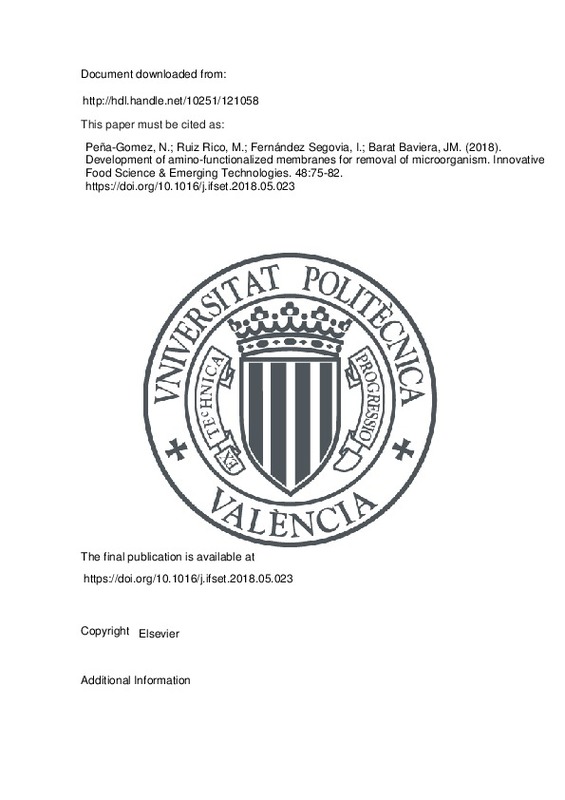JavaScript is disabled for your browser. Some features of this site may not work without it.
Buscar en RiuNet
Listar
Mi cuenta
Estadísticas
Ayuda RiuNet
Admin. UPV
Development of amino-functionalized membranes for removal of microorganism
Mostrar el registro completo del ítem
Peña-Gomez, N.; Ruiz Rico, M.; Fernández Segovia, I.; Barat Baviera, JM. (2018). Development of amino-functionalized membranes for removal of microorganism. Innovative Food Science & Emerging Technologies. 48:75-82. https://doi.org/10.1016/j.ifset.2018.05.023
Por favor, use este identificador para citar o enlazar este ítem: http://hdl.handle.net/10251/121058
Ficheros en el ítem
Metadatos del ítem
| Título: | Development of amino-functionalized membranes for removal of microorganism | |||
| Autor: | Peña-Gomez, Nataly | |||
| Entidad UPV: |
|
|||
| Fecha difusión: |
|
|||
| Resumen: |
[EN] Treatments to ensure water supply of an acceptable hygienic-sanitary quality is of vast importance. Among unconventional treatments, membrane technologies have recently stood out. Immobilization of antimicrobial ...[+]
|
|||
| Palabras clave: |
|
|||
| Derechos de uso: | Reconocimiento - No comercial - Sin obra derivada (by-nc-nd) | |||
| Fuente: |
|
|||
| DOI: |
|
|||
| Editorial: |
|
|||
| Versión del editor: | https://doi.org/10.1016/j.ifset.2018.05.023 | |||
| Código del Proyecto: |
|
|||
| Agradecimientos: |
Authors gratefully acknowledge the financial support from the Ministerio de Economia y Competitividad and FEDER-EU (Project AGL2015-70235-C2-1-R). N.P.G. is grateful to Generalitat Valencia for her grant. The authors also ...[+]
|
|||
| Tipo: |
|







![[Cerrado]](/themes/UPV/images/candado.png)


